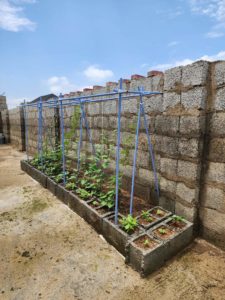SA-based Zimbabwean geologist makes groundbreaking discovery of world’s largest gold resource, valued at billions
![]()
*Photo: Dr Steve Chingwaru*
PhD recipient Dr Steve Chingwaru’s groundbreaking research in geomatallurgy is turning heads. At just 26, he’s uncovered potentially the world’s largest invisible gold resource, valued at R450 billion.
Obtaining a PhD at 26 is already a massive achievement, but what makes Chingwaru’s graduation from Stellenbosch University (SU) even more remarkable is his groundbreaking geomatallurgy research that has garnered interest from mining companies around the globe.
Chingwaru has uncovered what is potentially the world’s largest invisible gold resource.
Originally from Zimbabwe and growing up in Johannesburg with his aunt, the gifted geometallurgist has mining in his blood. Chingwaru is the grandson of the legendary prospector George Nolan who discovered lithium in Zimbabwe and even wrote a book, Road to Lithium Lodge, about his adventures looking for precious metals in the wilderness of what was then southern Rhodesia.
Although his grandfather lost most of his fortune, Chingwaru’s future looks bright. His findings could help unlock gold to the value of R450 billion that is hiding in plain sight within the unsightly mine dumps around Johannesburg.
Uncovering a hidden gold mine
Historical mine waste from the Witwatersrand called tailings, contains over six billion tonnes of material with significant gold content, Chingwaru explains. The research for his Master’s degree, which was upgraded to a PhD along the way, aimed to calculate and characterise these gold reserves. He also explored ways to extract the gold efficiently while addressing environmental concerns related to the tailings, such as the release of acid mine drainage due to pyrite oxidation.
“Invisible gold” – minuscule particles locked inside other minerals – is nothing new. But Chingwaru is the first scholar to calculate that the six billion tons of tailings around Johannesburg’s mines contain up to 460 tons of gold.
“Historically, the low concentration of gold inside tailings was considered too low grade to be of value. But now that extensive mining has depleted most of the high-grade concentration of gold, it’s becoming unfeasible to mine – some shafts are already reaching 4 km underground. Looking for gold in low-concentration sources is becoming more viable,” Chingwaru notes.
Some big mining companies have started to process the tailings to extract the leftover gold, but the traditional way of extraction through cyanide is not very effective and also damaging to the environment, Chingwaru points out.
“Typically, they manage to extract just 30% of the gold through this process. So, in my PhD research, I asked where the remaining 70% is and how it can be safely removed from the pyrite.”
As a child growing up in Alberton, Chingwaru thought the mine dumps were just a natural feature of Joburg.
“When it was windy in August, the dust would turn everything in our house orange,” he remembers.
Having now analysed samples from tailing dumps in Carletonville, Central Rand, Evander and Klerksdorp Goldfields, Chingwaru knows the nuisance he experienced in his youth is extremely dangerous for the environment and humans.
“When sulphides become oxidised, they produce sulphuric acid, and when that goes into the groundwater, it increases the mobility of several toxic elements. It’s a big problem in some parts of Johannesburg where they’re scared that their groundwater is becoming polluted by tailings-related acid mine drainage. That’s why I’m passionate about highlighting the economic potential, as well as the environmental benefits of reprocessing tailings dumps efficiently.
“If you process the pyrite, you are taking out the key cause of acid mine drainage, plus you’re getting economic value from it. The process has the potential to recover additional valuable by-products such as copper, cobalt and nickel, and reduce or even eliminate the heavy metal pollution and acid mine drainage associated with tailings dumping,” Chingwaru says.
*Credit: Zimbabwe Mail


